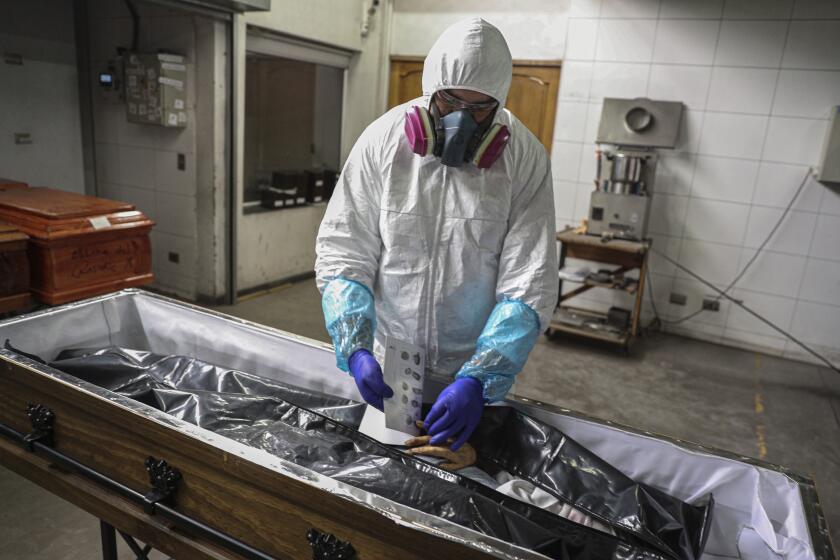Drinking: A Close-Up Look at Why We Do It, and What It Does for Us
Why do human beings drink? To quench thirst, to be sure. But also to stay alert or get drunk, to cool off or warm up, to soothe a set of jangled nerves.
Bodies need one primary thing from beverages: water. Every cell in our bodies contains water--an aqueous stock that should be replenished daily. Water is mainly what we get from beverages, from seltzer to soda pop.
Even most alcoholic and caffeinated beverages are primarily water, but we don’t necessarily drink them to quench thirst. Nor could we: Caffeine has a diuretic effect. So does alcohol; it interferes with the “antidiuretic hormone,” stimulating urination. Diluted beverages such as iced tea or wine spritzers, however, may have so much water that they have a net quenching effect.
What, then, are alcoholic and caffeinated beverages? You might say they are liquid drugs--legal, socially acceptable, pharmacologically active. That makes their role in our lives a little more complicated than, for instance, milk.
Caffeinated coffee is our society’s primary legal stimulant; alcohol, our primary legal depressant. Herbal teas often have proven pharmacologic actions, some therapeutic, some mood-enhancing. From gin to ginseng, we drink to feel better.
Modest daily amounts of alcohol and caffeine can be safe, even beneficial. Two or three cups of coffee appear to be fine for most of us. These days, though, fears of alcohol are on the increase. In November, labels from the U.S. surgeon general--warning about the risks of drinking while pregnant or driving--began appearing on all alcoholic beverages.
But despite these new warnings, several studies show that alcohol can be healthy. If you control your drinking, and aren’t pregnant, a glass or two of wine, a couple of beers, even two shots of rye, appear to be reasonable indulgences.
Some doctors similarly advise us that a serving or two of alcoholic beverages a day may relax us, benefit the cardiovascular system and stimulate conviviality. Three or four a day, however, does damage; over time, it can kill.
“At three or more drinks a day, you don’t see adverse coronary effects, but you do see increases in high blood pressure, cirrhosis of the liver, throat cancer, accidents, hospitalizations and mortality,” says Arthur L. Klatsky, chief of cardiology at Kaiser Permanente Medical Center in Oakland. For men with high blood pressure, for example, going from three drinks a day to none for one week may lower pressure.
The Surgeon General’s Report on Nutrition and Health advises that even one drink is too much for pregnant women, because alcohol consumption is associated with fetal abnormalities.
Alcohol can also kill quickly. Half the car fatalities and homicides, one-third of the suicides, and as many as two-thirds of the drownings, and one-quarter of the burns, fires and falls in this country involve alcohol, according to epidemiologist Mary Dufour of the National Institute on Alcohol Abuse and Alcoholism.
Alcohol may also play a role in cancer, although no one is sure exactly what that role is. A Harvard study of more than 87,000 female nurses (the Nurses’ Health Study) found that women who have more than one drink a day have a higher risk of breast cancer. A National Cancer Institute study found this link even at three drinks a week. But a CDC study of 6,655 women 20 to 54 found no such relationship.
A “meta-analysis” of 21 studies, conducted by Harvard School of Public Health researcher Matthew P. Longnecker, reveals that two drinks a day or more are associated with increased breast cancer risk, but at one drink a day, the link is weak. “If alcohol is a risk factor for breast cancer, it’s a relatively modest risk factor,” says associate professor David Klurfeld of the Wistar Institute in Philadelphia.
Nevertheless, women at high risk for breast cancer--for example, those with a strong family history of the disease--may want to be especially careful, Klatsky notes.
“A woman should look at the role that drinking plays in her life and make a decision,” adds Boston University epidemiologist Lynn Rosenberg. “There’s a lot to be said for women not drinking heavily for general health and well-being.”
What you drink, and in what context, may influence whether alcohol is a healthful part of your life, or a problem. In many cultures, drinking wine or beer with food is routine, and wine itself is a natural fermented agricultural product containing nutrients such as magnesium, calcium and potassium.
Red wine provides 5% of the U.S. recommended daily allowance for iron. Red wine may even offer some protection against cancer. It contains a substance called quercetin that, at least in the laboratory, strongly inhibits the growth of cancer cells, UC Berkeley scientists have found.
Drinking a glass or two of wine with dinner or a beer after work is one of life’s pleasures. But as a drug, alcohol is easy to abuse. “How a person handles alcohol is important,” Klatsky says. “It’s unhealthy to use alcohol as a drug, a sedative, a tranquilizer, or to drown one’s troubles.”



